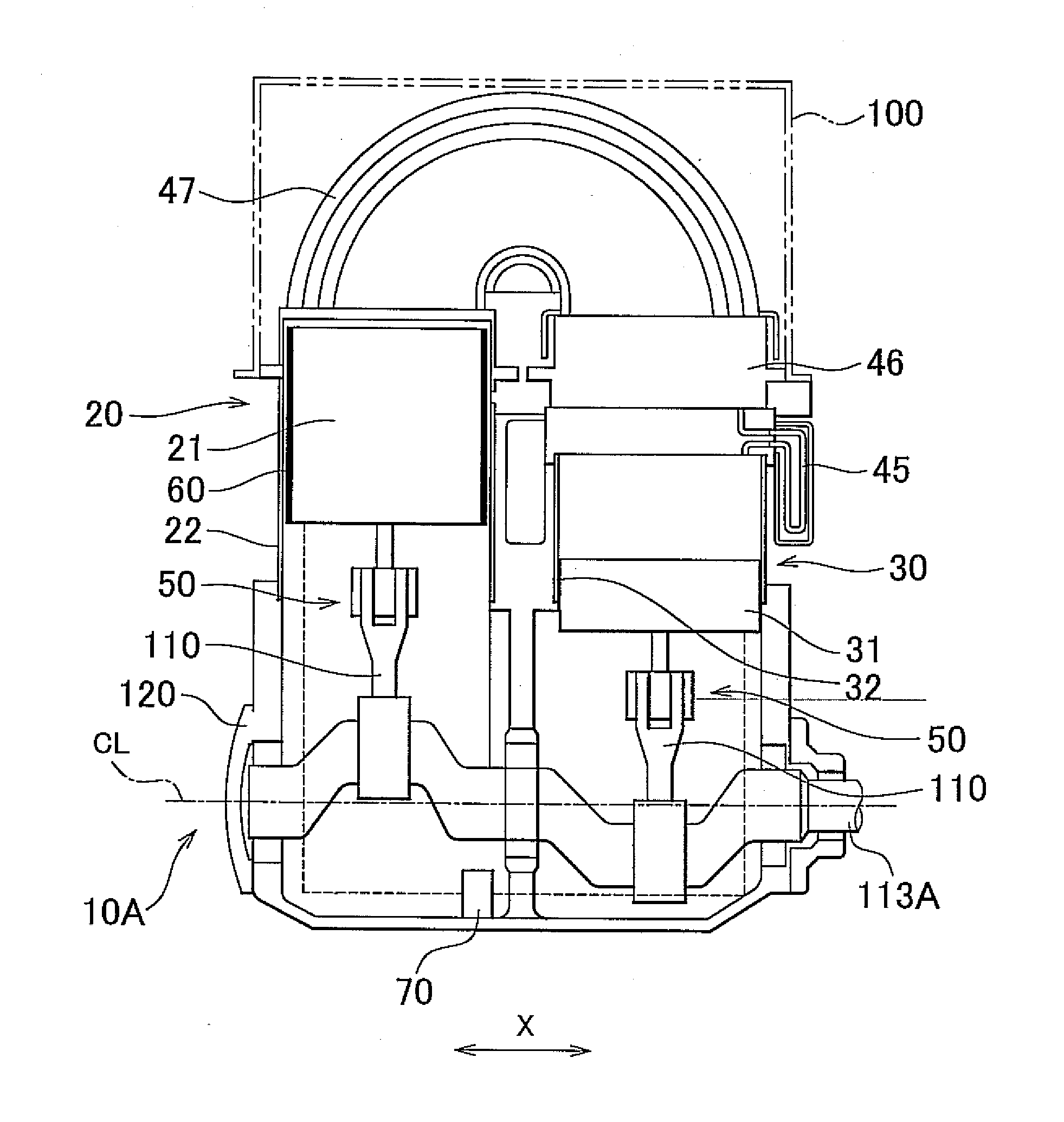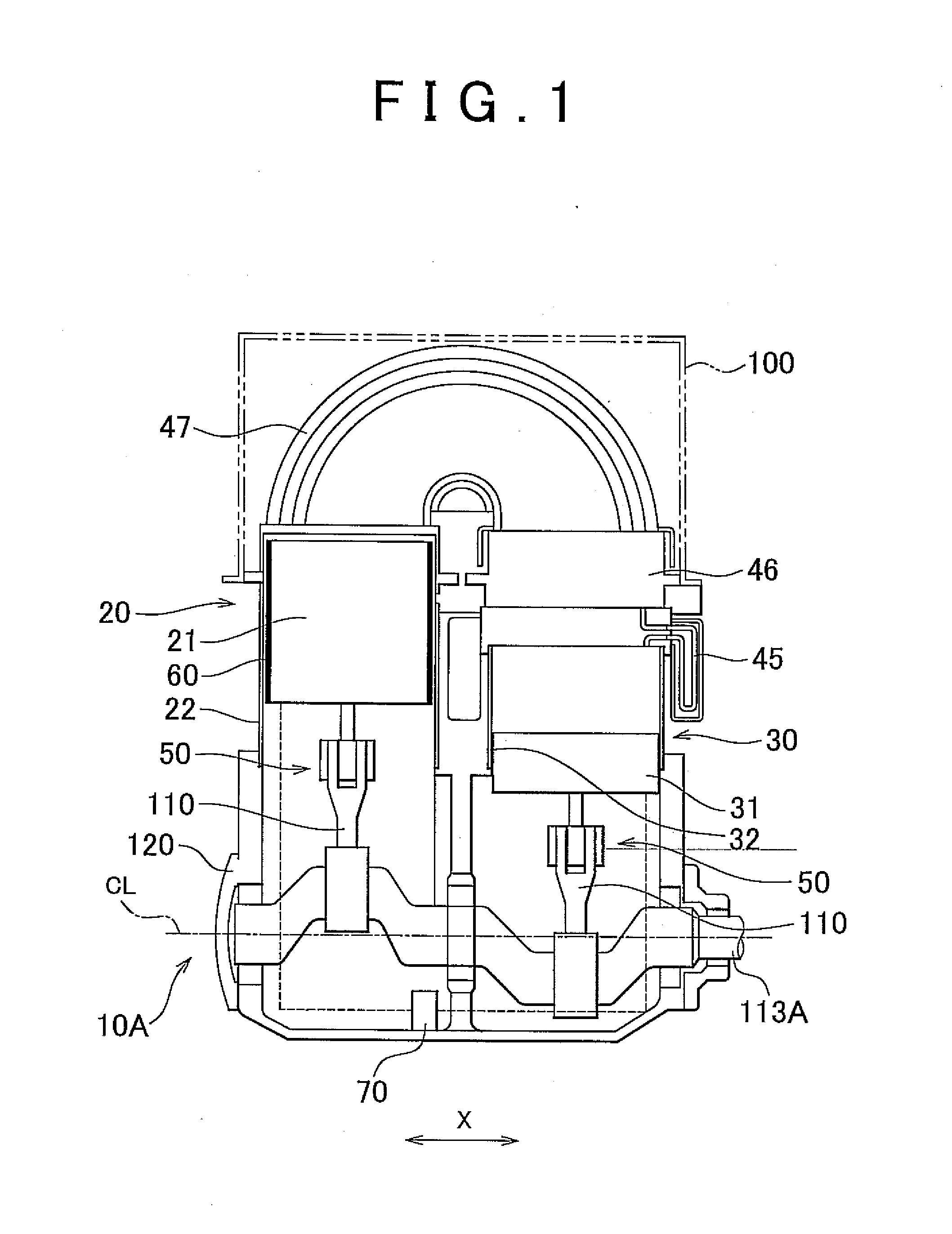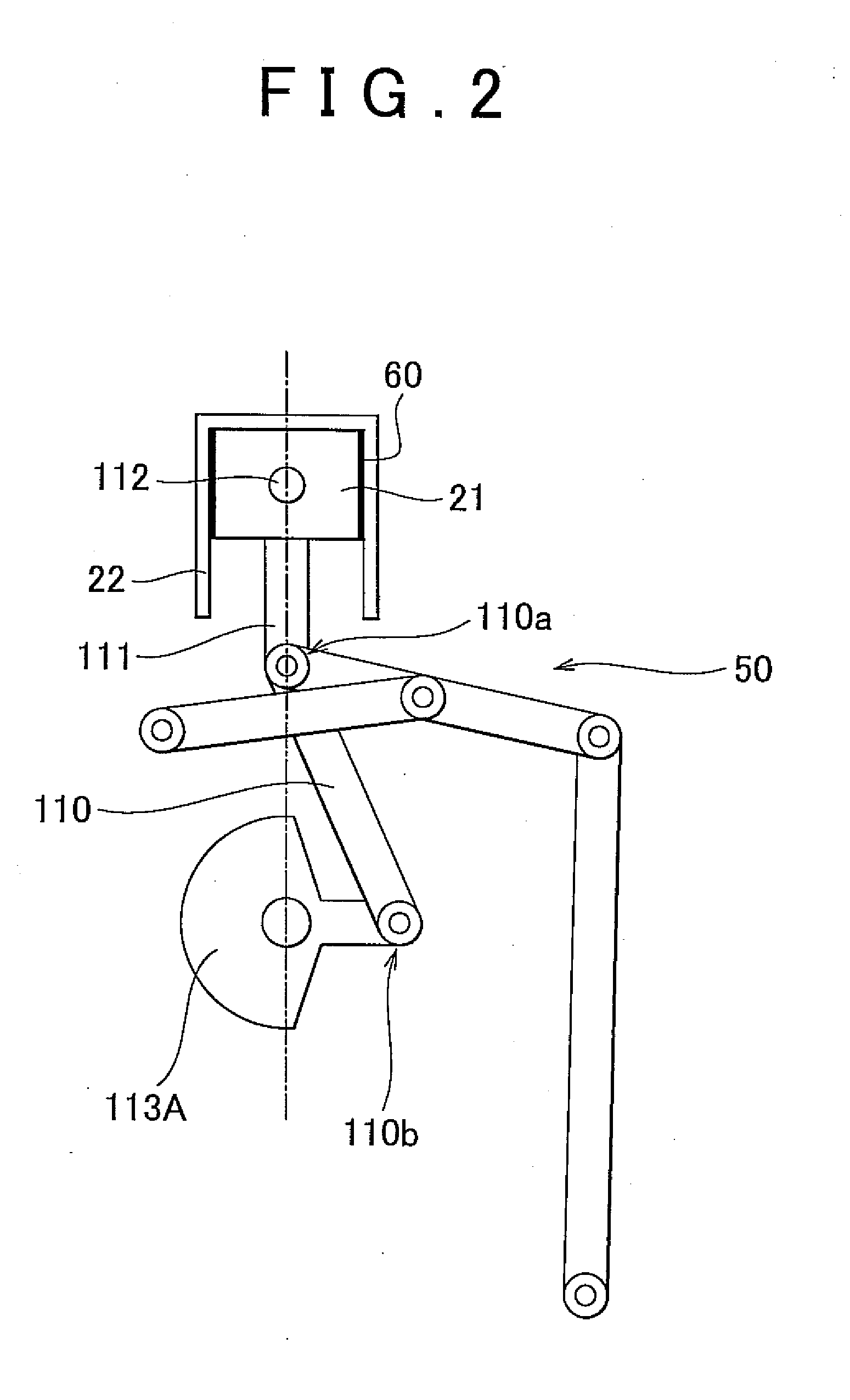Stirling engine and control method thereof
a technology of rotating engine and control method, which is applied in the direction of closed-cycle machine/engine, hot gas positive displacement engine plant, etc., can solve the problems of reducing performance, foreign matter agglutinate, and increasing pressure of engine,
- Summary
- Abstract
- Description
- Claims
- Application Information
AI Technical Summary
Benefits of technology
Problems solved by technology
Method used
Image
Examples
first embodiment
[0045]FIG. 1 is a schematic diagram showing a Stirling engine 10A according to this embodiment. The Stirling engine 10A is a two-cylinder α-type Stirling engine. The Stirling engine 10A includes two cylinder portions, namely a high-temperature side cylinder portion 20 and a low-temperature side cylinder portion 30, which are disposed in parallel series such that an extension direction of a crank axis CL and a cylinder arrangement direction X are parallel to each other. The high-temperature side cylinder portion 20 includes an expansion piston 21 and a high-temperature side cylinder 22, while the low-temperature side cylinder portion 30 includes a compression piston 31 and a low-temperature side cylinder 32. The compression piston 31 is provided at a phase difference to the expansion piston 21 so as to move at a delay of approximately 90°, in terms of a crank angle, relative to the expansion piston 21.
[0046]An upper portion space of the high-temperature side cylinder 22 serves as an ...
second embodiment
[0079]A Stirling engine 10B according to this embodiment is substantially identical to the Stirling engine 10A except that an ECU 8013 is provided in place of the ECU 80A. The ECU 80B is substantially identical to the ECU 80A except that the control means is realized in a manner to be described below. Accordingly, illustration of the Stirling engine 10B has been omitted. Likewise in the ECU 8013, the control means is realized to perform control for preventing the expansion piston 21 from contacting the high-temperature side cylinder 22 until the temperature Tp of the expansion piston 21 can be suppressed below the predetermined value γ while the engine operation is stopped. However, in the ECU 80B, the control means is realized to perform control for continuing the engine operation using the heat stored in the heater 47, i.e. received heat, after the heat supply from the high-temperature heat source is stopped until the piston temperature Tpb can be suppressed below the predetermine...
third embodiment
[0084]A Stirling engine 10C according to this embodiment is substantially identical to the Stirling engine 10A except that an ECU 80C is provided in place of the ECU 80A. The ECU 80C is substantially identical to the ECU 80A except that the control means is realized in a manner to be described below. Accordingly, illustration of the Stirling engine 10C has been omitted. Likewise in the ECU 80C, the control means is realized to perform control for preventing the expansion piston 21 from contacting the high-temperature side cylinder 22 until the temperature Tp of the expansion piston 21 can be suppressed below the predetermined value γ while the engine operation is stopped.
[0085]However, in the ECU 80C, the control means is realized to perform control for continuing the engine operation making maximum use of the heat stored in the heater 47 after the heat supply from the high-temperature heat source is stopped, and then beginning the operation to stop the engine operation such that th...
PUM
 Login to View More
Login to View More Abstract
Description
Claims
Application Information
 Login to View More
Login to View More - R&D
- Intellectual Property
- Life Sciences
- Materials
- Tech Scout
- Unparalleled Data Quality
- Higher Quality Content
- 60% Fewer Hallucinations
Browse by: Latest US Patents, China's latest patents, Technical Efficacy Thesaurus, Application Domain, Technology Topic, Popular Technical Reports.
© 2025 PatSnap. All rights reserved.Legal|Privacy policy|Modern Slavery Act Transparency Statement|Sitemap|About US| Contact US: help@patsnap.com



